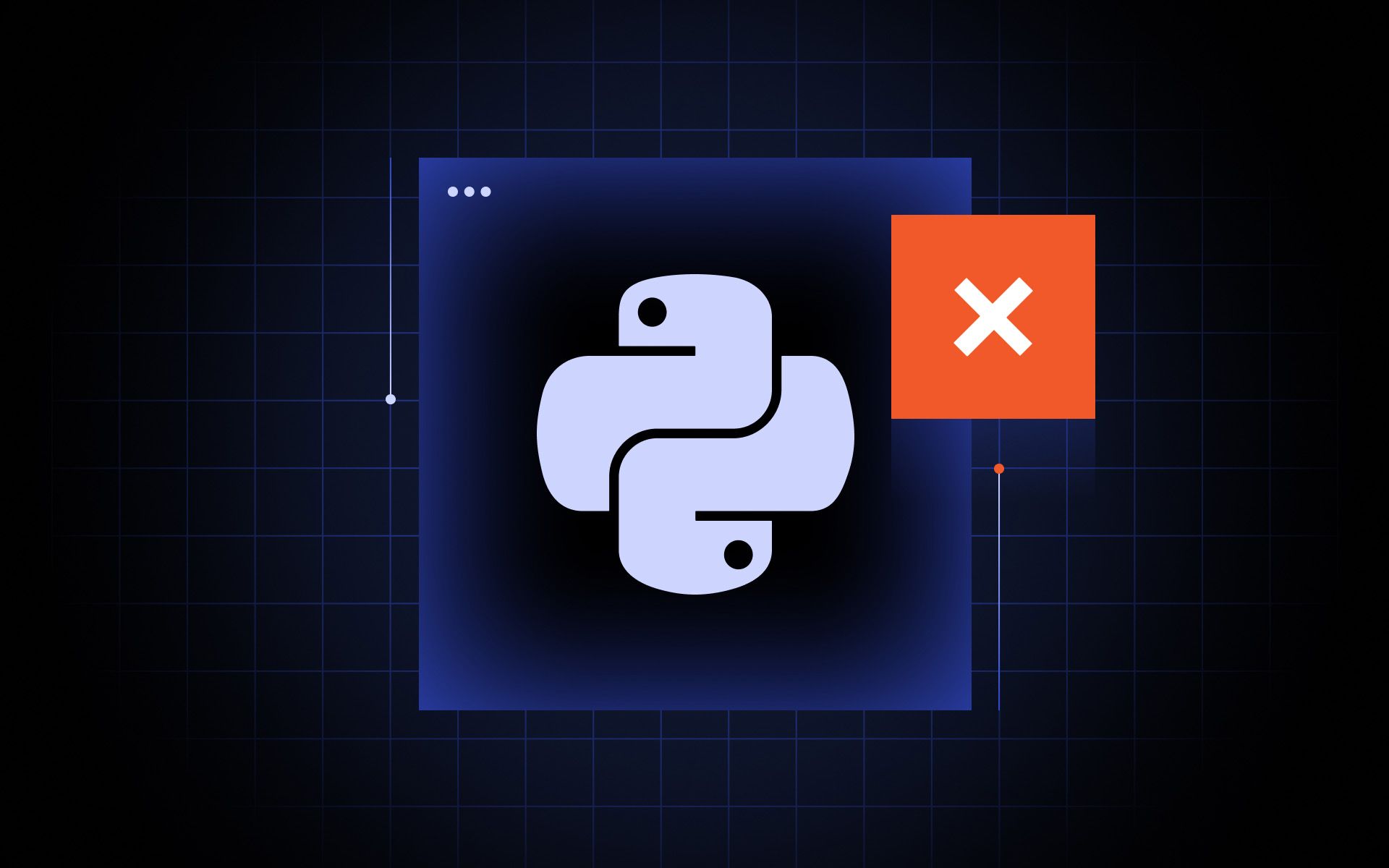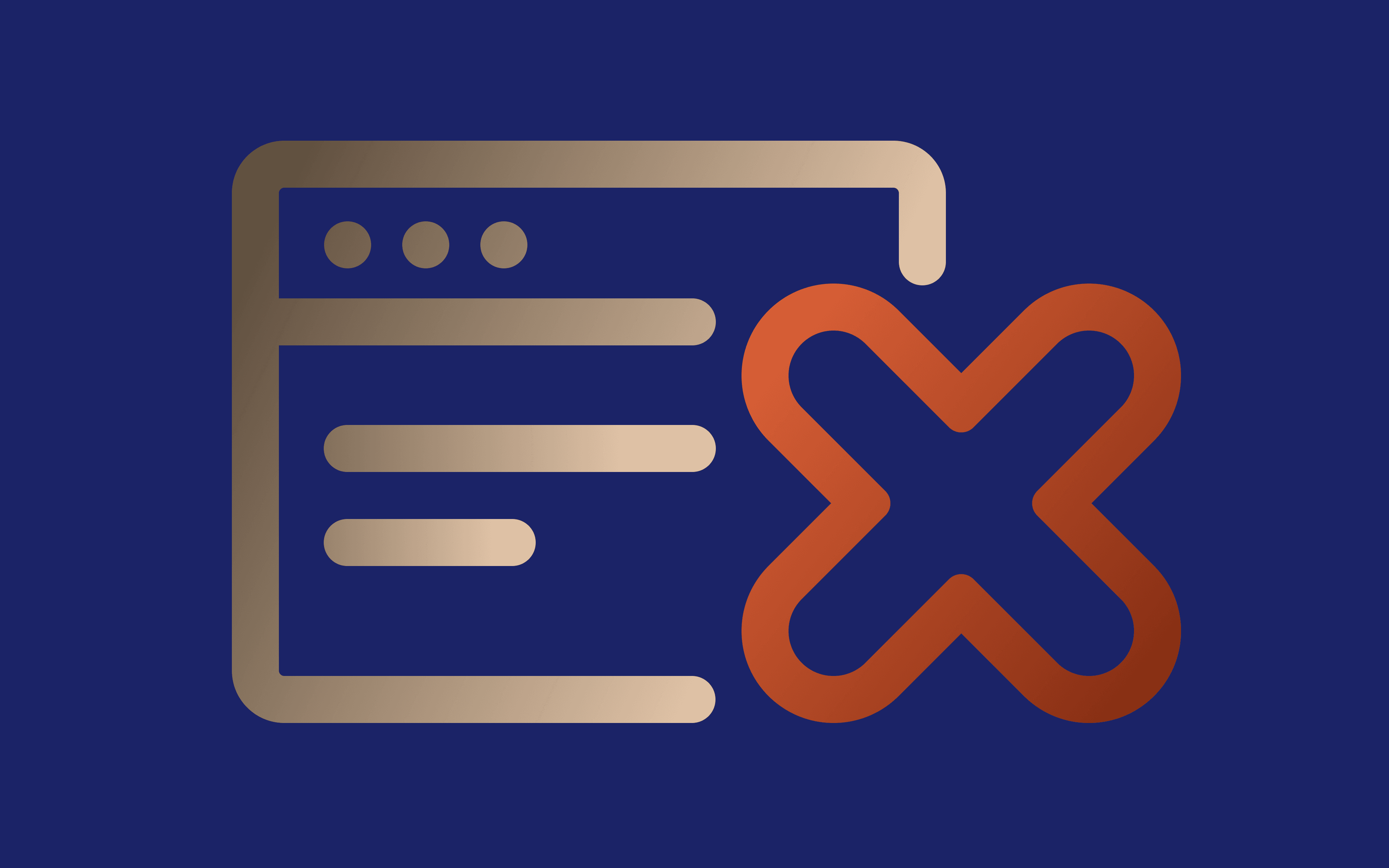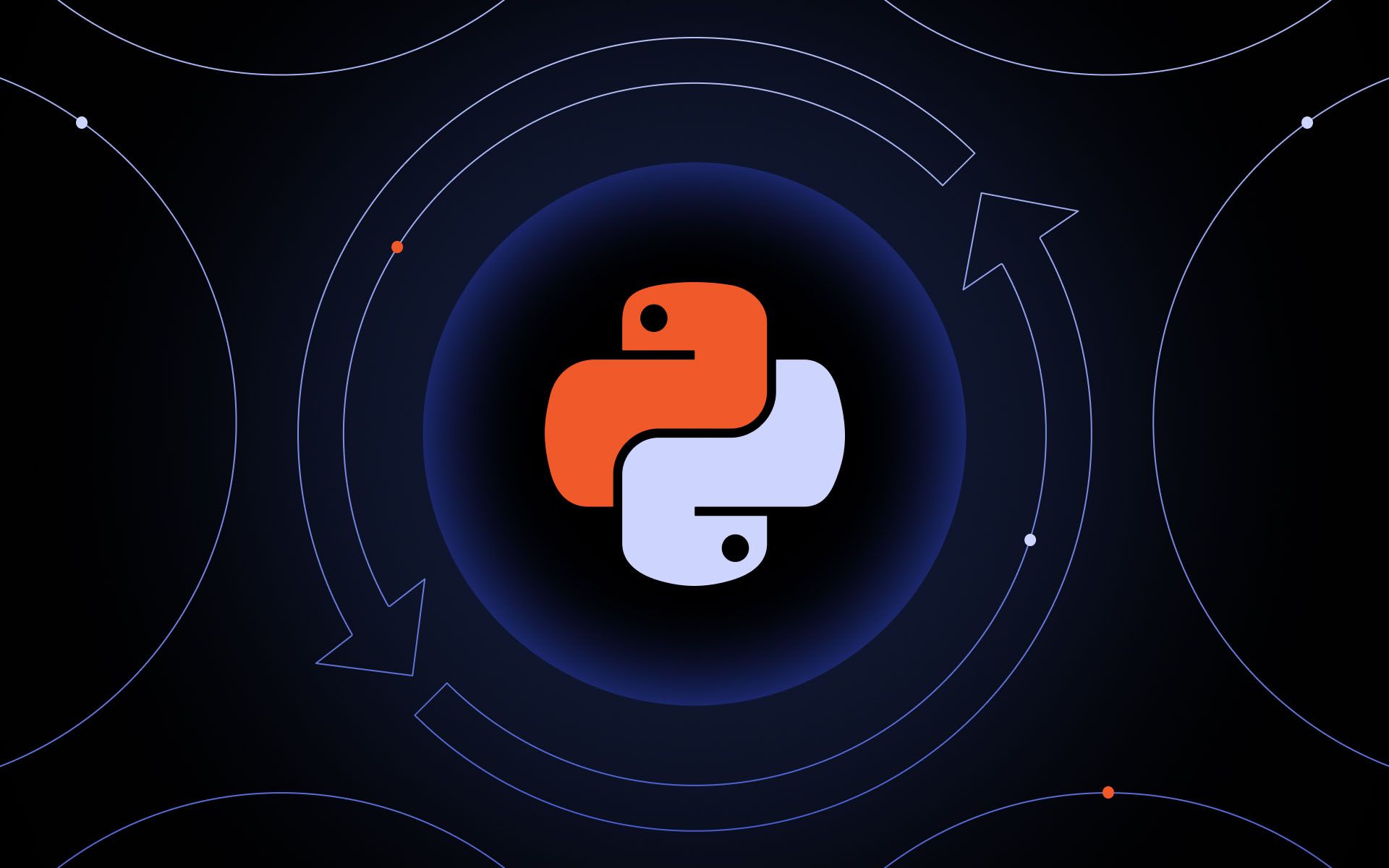Resolving Parse Errors in Python: Common Causes & Solutions

Key Considerations
- Making syntax mistakes in Python will cause parsing errors.
- Parsing errors prevent code execution and the app from starting.
- Using an IDE is an excellent way to highlight parsing errors in real-time.
Writing functional code is excellent, but programming is just as much about fixing errors. Developing complex applications with tens of thousands of code lines can produce more error messages than there are stars in our galaxy.
It's an exaggeration, but it accurately reveals how overwhelming programming language errors can be. A single missing comma can prevent your application from starting, or maybe you are missing parentheses.
These are called syntax errors, but you may have also heard them called parse errors. That's because Python raises a syntax error if its parser cannot understand the written code.
Luckily, Python outlines syntax errors to the exact code line and often explains what's wrong. However, sometimes it may land you in a slightly different line, or the explanation is too vague to solve the problem.
To help you navigate the Python syntax constellation, we have written a guide on how to identify and solve parse errors in Python. But before we jump into practice, let's briefly review the difference between parse errors and syntax errors and their common causes.
Difference between parse errors and syntax errors
Let's start from the beginning. Each programming language (Python, JavaScript, C++, etc.) has its own set of grammar rules, just like spoken language. A parse error happens when the code's parser cannot understand the written code.
Python syntax mistakes are a widespread cause of parse errors. Whenever you use invalid syntax or wrong indentation, Python will display syntax errors and, on most occasions, offer a brief explanation of the exact problem.
Also, do not mix up parse errors with data parsing errors. The latter refers to errors that happen when transforming unstructured data into a more readable format. If you want to learn more, read our comprehensive data parsing guide, but for now, just remember these are entirely different things.
It is also worth noting that the parser is a part of the Python interpreter that understands and executes Python code. If you make syntax errors, the interpreter breaks, and the code does not execute.
Lastly, do not mix up syntax errors with Python exceptions. The latter happen during the program's execution, so they are also called runtime errors. Meanwhile, syntax errors prevent programs from starting at all.
Common causes of Python parse errors
The Python programming language is known for its beginner-friendly syntax, but even experienced developers slip up sometimes. Some of them are effortless to spot, like typos, while indentation errors can take hours to find without Python pointing them out automatically.
Remember that with a parse error, Python code will not execute at all, so you must fix them before seeing how your application works. Here are the most common causes of Python parse errors.
Missing colons or parentheses
Colons, the symbol :, and parentheses, the symbol (), are extremely important in Python code structure. Colons mark the beginning of code blocks and are always written at the end of the line. Meanwhile, parentheses define function calls, operation orders, and group expressions.
Here's an example we wrote using Visual Studio Code IDE that includes invalid syntax.
def example_function()
print("This produces error")
The text editor immediately flags the error using the ^ symbol at the exact spot the parser encounters issues. You will get more details if you try to run it in the terminal. See the picture below for the results.

The program indicates that it expected a colon after defining the example function. Because the following line starts a new code block, a colon must separate it from the previous statement.
The same applies to parentheses. If you write the following code:
print("This also produces an error")
you see a similar parse error Python message in the terminal.

As you can see, it successfully identifies that the first line does not have a closed parenthesis. Also, notice the Pylance keyword. It appears because we added the Pylance language server to the IDE.
This tool highlights Python syntax elements, checks the code for syntax errors, and provides explanations and suggestions. When dealing with Python invalid syntax, such tools are invaluable to spot and handle syntax errors quickly.
Improper indentation
Python uses indentation to organize code blocks, unlike C, C++, or JavaScript, which use curly brackets - {}. This is an extremely common error message for Python newcomers, as indentations are also hard to spot.
Indentations are empty spaces appearing before the actual code. In Python, code blocks must have the same indentation, which means their distance from the left-side border is the same. Instead of symbols like curly brackets, the correct indentation marks the beginning and the end of a Python code block.
Let's take the following code as an example:
for x in range(5):
print("correct")
print("not correct")
print("correct")
The Python interpreter marks the third line as an error. The second line begins a new code block and is correctly indented, but notice that the third line is one empty space too far. The fourth line is also correct, because it will be executed after the 'for' loop ends, so it belongs to the same code block with the same indentation.
Invalid tokens or symbols
Like in all programming languages, Python is also strict regarding the correct use of tokens and symbols.
The smallest meaningful component that the interpreter can understand is called a token. It includes identifiers (variable names like my_example), keywords (for, while, class, except, etc.), literals (numbers and "word strings"), punctuators ( { } ), and operators (*, -, +).
For example, the code line:
example_list = ["apple", "carrot" "peach"]
would return an error because it has a missing comma punctuator between the second and third list items.
A symbol is a more abstract unit that stores this information:
- Its type (function, number, class, etc.).
- The scope informs where the symbol can be used in the code.
- The memory location informs where its value is stored.
Let's take the following code line as an example:
price = 10 + 5
The price will be marked as a token, which is an integer variable. If you try to rewrite it as price = 10€ + 5€, you will get syntax errors, because it uses unsupported symbols.
Using reserved keywords improperly
Python uses reserved keywords that have a specific and fixed purpose. You will get a syntax error if you try to use reserved keywords for something else than the defined meaning.
For example, the 'class' keyword is reserved, and a class name must always follow it. Here's an incorrect usage that will result in a parsing error by the Python interpreter.
class = "an_example"
This will be marked as a syntax error, because Python does not expect the = operator after the class reserved keyword. Instead, it should follow:
class ExampleClass:
syntax structure, with class-defining code written on the following line after the colon.
How to Fix a Parse Error in Python
Remember that these errors are not Python exceptions and prevent running the code at all, so you cannot rely on standard code debuggers. You will have to rely on your Python syntax knowledge, but the programming language will also give you a hand with error explanations.
Here are a few debugging tips to get you started.
Inspect the error message
First and foremost, closely inspect the Python parsing error message. You will get the following information:
- Its type (in this case, its SyntaxError).
- Description, such as a missing comma or wrong indentation.
- File name where the error occurred.
- Code line number.
Also, look for the symbol ^, which points to the exact spot it happened.
Inspect indentation
In most cases, Python will use the ^ symbol to mark the exact spot where the indentation is wrong. However, these are very hard to spot by eyesight alone, as you deal with hundreds of code lines with separate indentations. Carefully inspect the error and the code lines that surround it to find the issue.
Look for popular mistakes
Review your code for missing commas, closing parentheses, wrong quotes, and missing colons after statements. Although some programming errors are challenging and take hours, if not days, to solve, you'd be surprised how many stem from a single typo or unclosed code blocks.
Using IDEs or linters for syntax validation
Being able to handle syntax errors by manually inspecting one's code is highly valuable and shows in-depth programming language knowledge. But most of the time, you will rely on dedicated tools with built-in syntax error-solving features.
Most Integrated Development Environments (IDEs), like Visual Studio Code we use as an example, include parsers to spot syntax errors. Additionally, extensions like Pylance or Python debugger offer even more benefits, like quick fixes, type-hinting, expression evaluation, and more.
Lastly, take a look at linters. These tools are developed to analyze the code for bugs, inefficient code blocks, grammatical errors, and even structural problems. Keep in mind that when writing more complex dynamic code, you will likely require advanced tools to solve challenging issues.
How to avoid parse errors in the future
Knowing how to handle syntax errors is essential, but developing skills to avoid them is just as important. Here are three tips to get you on a stellar journey.
Use code editors with syntax highlighting
Code editors with built-in syntax error-solving features will make the development much easier. Alongside highlighting errors and making typing suggestions, they can also be upgraded with extensions, like Python Pylance. Code editors also highlight syntax elements so that you can navigate the dynamic code structure easily.
Write modular and clean code
You will help yourself and also help your colleagues by writing clean code. Firstly, we recommend a highly rated book on writing clean code. Modulate your code by breaking it into logically separated parts that are easier to review. Also, leave informative (but not too long) comments so that other developers can familiarize themselves with your logic.
Run code frequently during development
Errors prevent the code from running at all, so you will spot issues by trying to do precisely that. You can run the code every few blocks so that you catch the bug as soon as possible. Catching bugs from a few days prior can introduce unnecessary problem-solving chaos.
Final thoughts
Encountering parsing errors is frustrating, but it's also a part of the development process. Consider coding issues as challenges that help you improve.
When writing complex dynamic code, you will often have to come up with innovative solutions. Knowing possible failure scenarios can help you write functional code lines, which is a one-way ticket to senior developer positions.
What is a parse error in Python?
In Python, a parse error occurs when the parser, which is a part of the code interpreter, cannot understand the written code. It happens before the execution of the code and is caused by syntax errors.
What causes parse errors in Python?
Syntax errors cause parsing errors in Python. For example, you may be missing a comma or using the wrong indentation. Keep a close eye on Python error messages that typically include a brief explanation.
What is parse() in Python?
Although not a native Python function, parse() is commonly used across multiple Python libraries. It is used to convert unstructured data into a more structured format, similar to data parsing in web scraping.



